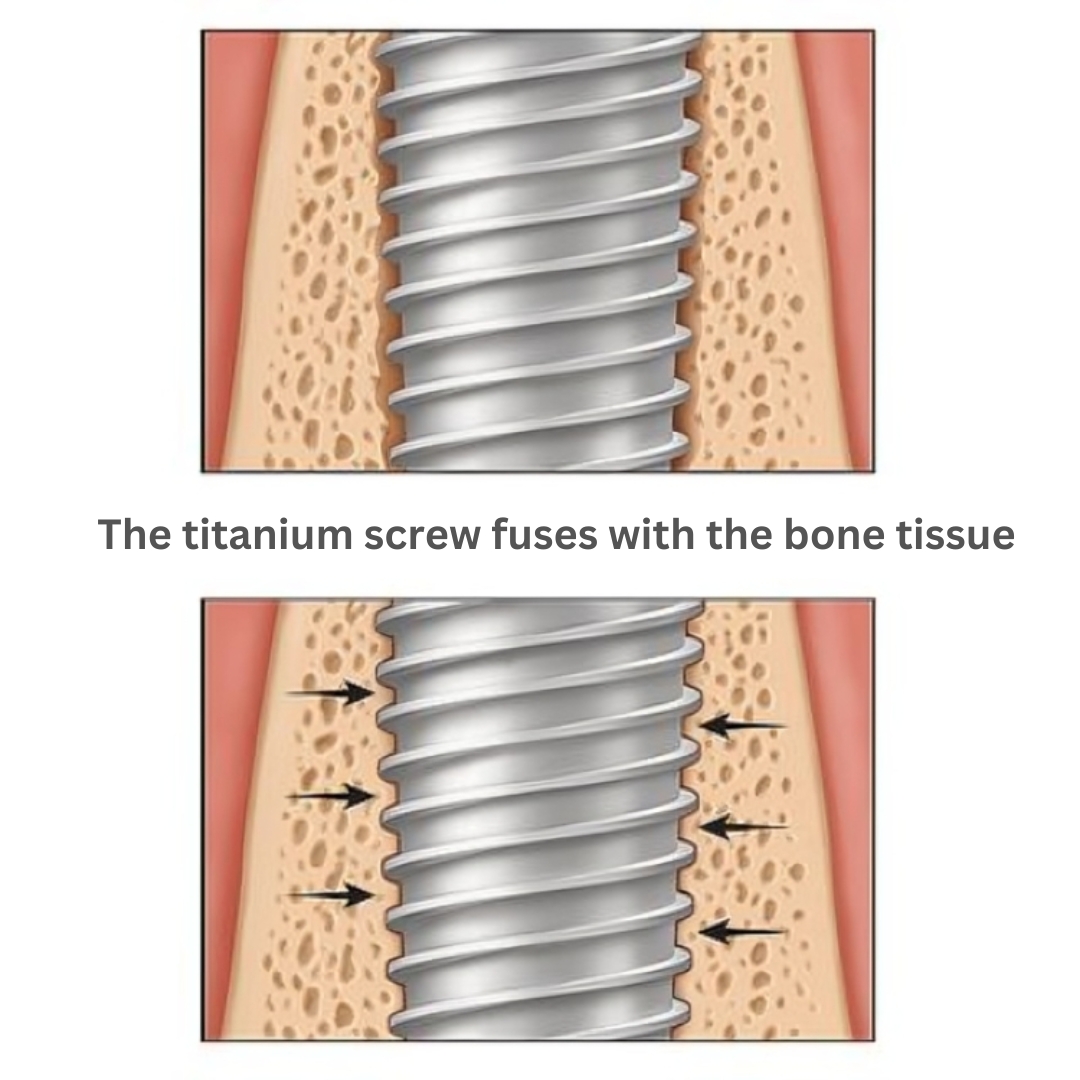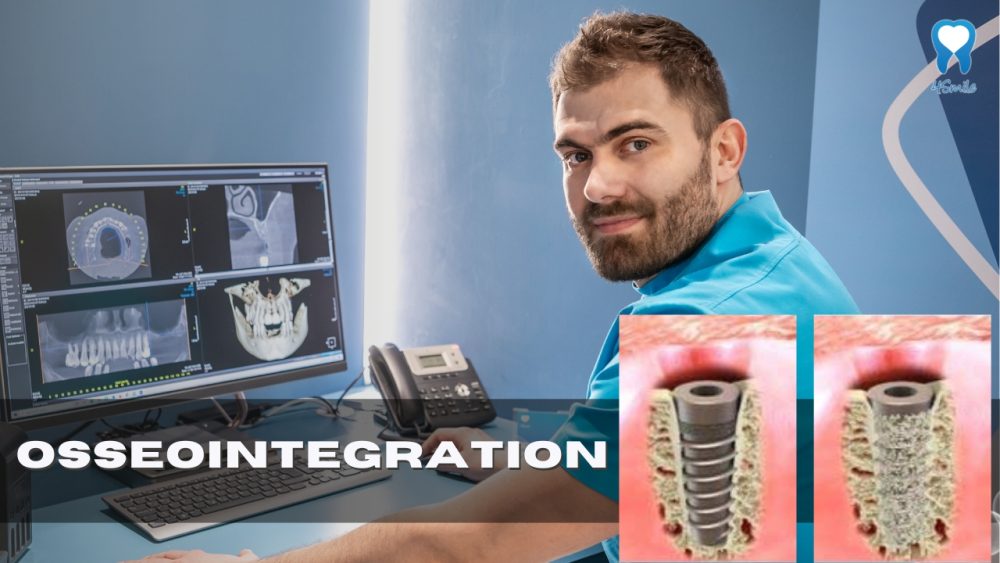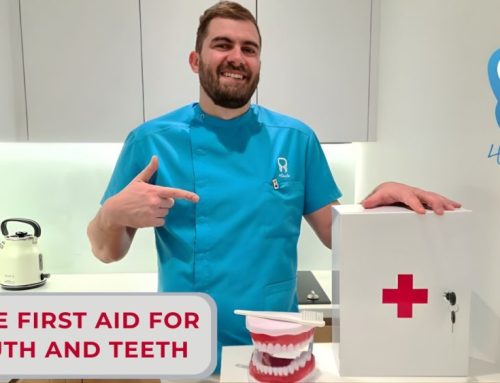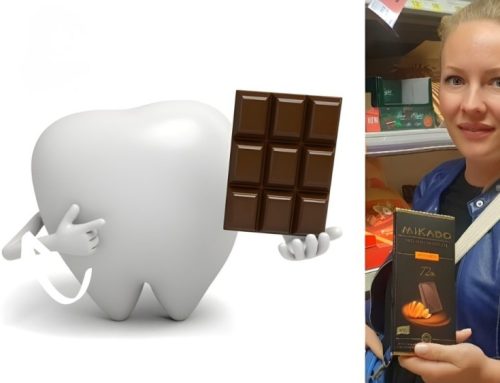Dental implants are an innovative and effective solution for replacing teeth. They are designed to function and feel like natural teeth.
Dental implants are surgically placed in the jawbone, where they fuse with the bone to provide a stable and long-lasting basis for a replacement tooth or dental bridge, i.e. they replace the natural tooth root.
The science behind dental implants is based on a process known as osseointegration. Osseointegration refers to the biological process that occurs when bone fuses with a metal surface, such as a dental implant. This process was first discovered by a Swedish researcher named Per-Ingvar Brånemark in the 1950s.
In this week’s Dental Center 4Smile blog, we will explain to you what osseointegration is and why osseointegration is crucial for the success and sustainability of dental implants.
What is osseointegration?
Osseointegration is a term used to describe the process of fusing a dental implant with the surrounding bone tissue in the jaw. This phenomenon is the key to the long-term success of dental implant therapy, as it allows the dental implant to function as a stable and permanent replacement for a missing tooth.
To understand how osseointegration works, it is important to first understand the structure of the jawbone. The jawbone is made up of a dense network of mineralized tissue that is constantly broken down and rebuilt in a process known as remodeling. This process allows the bone to adapt to the stresses of daily activities such as chewing and speaking.
When a dental implant is inserted into the jawbone, a small gap is created between the surface of the dental implant and the surrounding bone tissue. This gap is known as the implant-bone interface. Over time, the body’s natural healing response causes bone cells to migrate into the opening and attach to the surface of the dental implant.

This process of bone growth and attachment is known as osseointegration. It usually takes several months for osseointegration to complete, during which time the dental implant must not be implanted in order for the bone cells to fully integrate with the dental implant surface.
The only exception is the case of dental implant immediate implantation in All on 4 or All on 6 therapy.
Over time, bone tissue will continue to grow around the dental implant, further strengthening the connection and providing a secure base for a replacement tooth (ceramic crown), dental bridge or dental prosthesis.
What is needed for the osseointegration of a dental implant to be successful?
The success of osseointegration depends on a number of factors, including the quality and quantity of bone tissue, the design and placement of the dental implant, and the health and habits of the patient.
Titanium and titanium alloys are commonly used for dental implants because they have a unique property that allows them to bond with bone.
In general, healthy patients with good oral hygiene habits and high bone density are more likely to experience successful osseointegration than patients who smoke, have a compromised immune system, or suffer from certain medical conditions.
After the osseointegration is completed, the dental implant becomes fully integrated with the surrounding bone tissue, forming a stable and permanent basis for the replacement tooth or teeth. This enables the restoration of normal function and appearance, as well as preventing further loss of bone mass and damage to the surrounding teeth.
When can osseointegration be unsuccessful?
Although osseointegration is a critical component of the dental implant process, it is important to note that exceptions can occur for osseointegration to be unsuccessful.
Factors such as infection, improper dental implant placement, and poor bone density can contribute to failure of dental implant osseointegration. Additionally, some patients may experience a condition known as peri-implantitis, which is an inflammatory response that can lead to bone loss and dental implant failure.
How to reduce the risk of “rejected dental implant“?
In order to reduce the risk of “rejecting” the dental implant, it is important that patients maintain good oral hygiene habits, go for regular dental examinations and cleanings, and follow the dentist’s instructions for postoperative care. In this way, patients can increase their chances for successful osseointegration and enjoy the long-term benefits of dental implant therapy.
In conclusion, osseointegration is the key to the success of dental implants. It is a complex biological process that requires a delicate balance of factors to occur. With the right materials, experienced surgical technique and patient care, a dentist can achieve a high success rate for osseointegration and provide patients with a stable and long-lasting tooth replacement option.
If you are missing one or more teeth, dental implants can be the ideal solution to restore your smile and self-confidence. Consult your dentist, Ivan Antolković in Croatia, to determine whether dental implants are the right solution for you.
Also, it is worth mentioning that dental implantation is a completely painless process under the influence of local anesthesia, so there is no reason to worry! And you also shouldn’t worry even if you are a patient living abroad, because Dental Centre 4Smile team will help you organize your trip; including accommodation, transportation to our clinic and medical care in a blink of an eye.
Contact us now and see for yourself how easy and comfortable your trip to a beautiful and healthy smile can be!















